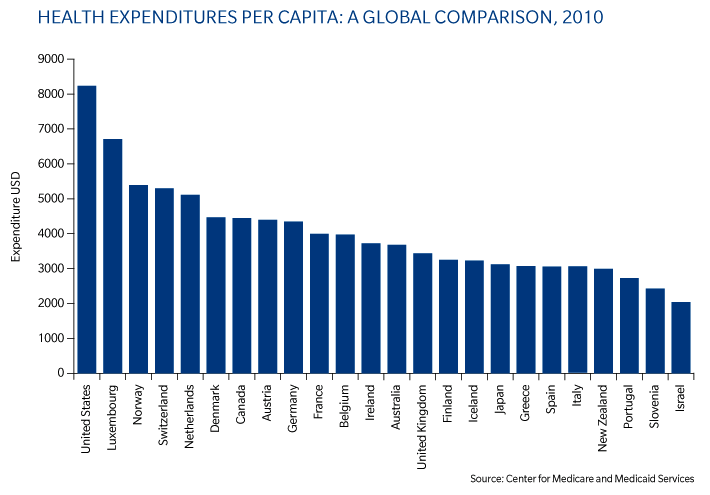
The impact of rising healthcare expenses has been and will continue to be felt around the world, in developed and undeveloped nations alike. Rising healthcare costs are putting a strain on governments worldwide. Nowhere in the world, however, are expenses as high as they are in the United States, where the impact extends into the medical component of workers compensation costs. Although the rate of growth has seen some stability, it still outpaces the US growth rate of inflation.
The figure below illustrates that per capita spending in the United States in 2010 was over USD 8,000. A key driver for higher US costs is that it spends more on hospital care and medical specialists. Hospital costs are 60 percent higher in the United States than in other Organization of Economic Cooperation and Development countries. Spending on the use of specialists is more than two times higher. Forecasters believe this trend will increase.

The US Health Care Cost Institute estimated that in 2013 US healthcare spending rose 3.9 percent per capita per insured. The overall growth rate has stabilized over the past several years, but prices for some services have increased at a faster rate. Hospital spending is on the rise mainly due to hospital consolidation - fewer hospitals leads to higher prices. And spending on the use of specialists has increased by as much as 8 percent.
The cost increases are only expected to worsen. Advancements in sophisticated medical technologies, including specialty drugs and innovative cures, compounded with an aging population are creating a "chicken and egg" scenario that will contribute to the risk of healthcare costs expanding at a more geometric rate.